Their bayonets have a hook on the underside, at the hilt.
One Jap tries to hook his opponents rifle long enough for the other to use his bayonet.
I never saw these tactics work successfully.
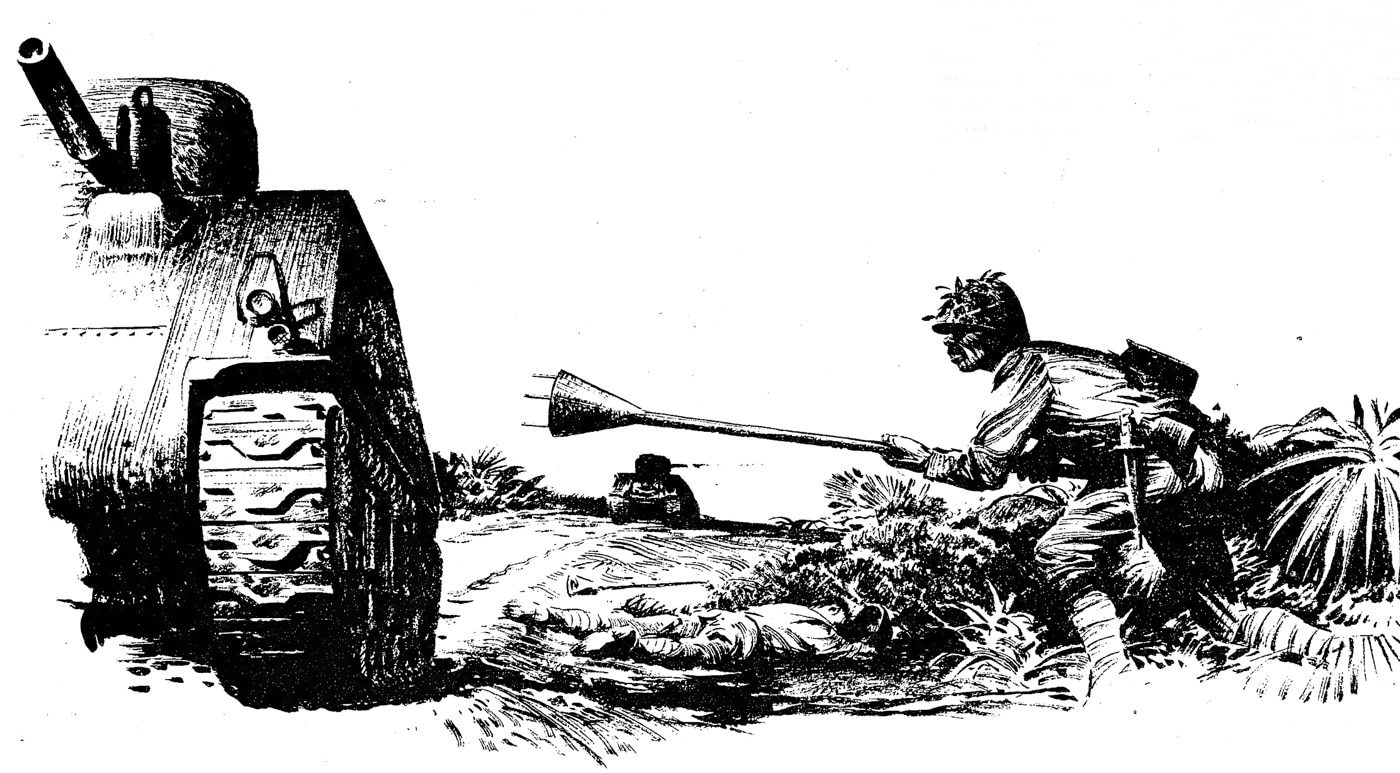
If the Japanese soldier successfully detonated a lunge mine against the side armor of a M4 Sherman tank, both the tank and the attacker would likely be destroyed. Image: NARA
They did very little fencing but attempted direct jabs.
These weapons were used to arm men for whom no better weapon could be supplied.
The stomach, however, was found to be a most vulnerable spot.
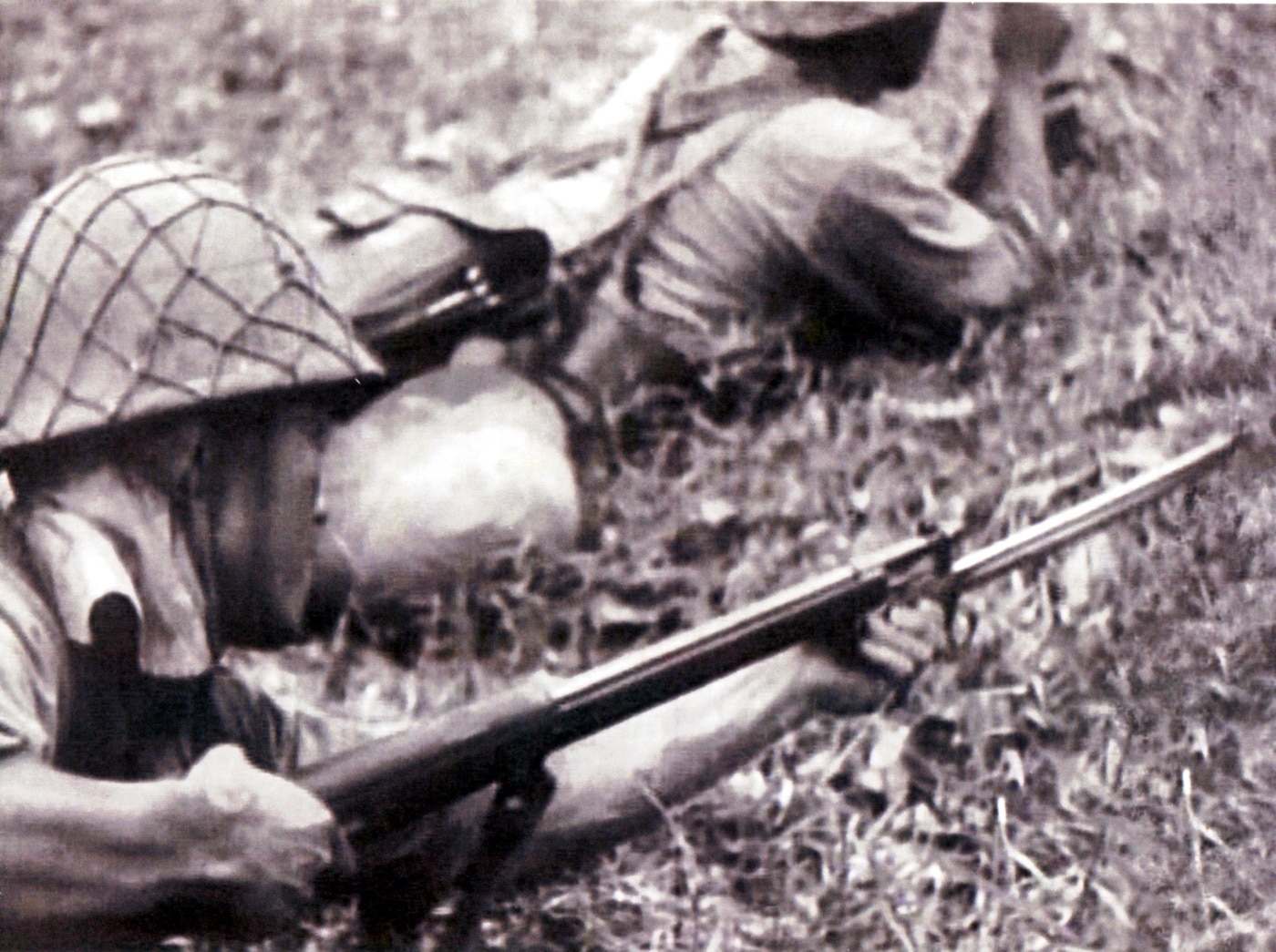
The Japanese Type 30 bayonet featured a 15.75″ blade. Although it was longer than its American counterpart, the advantage didn’t seem to affect the engagement outcomes. Image: Author’s collection
His last radio transmission to Tokyo proclaimed that he would annihilate the Americans.
Even so, weapons and ammunition were in short supply.
When Attu was finally secure, less than 30 of the original 2,900 Japanese defenders survived.

The Japanese Type 38 rifle with its matching Type 30 bayonet. Image: NARA
U.S. troops began to refer to these crude spears as Banzai Sticks.
Whatever they were called, they were of little value against massed machine gun and rifle fire.
The G.I.s fought back the tears as they shot the charging civilians down.
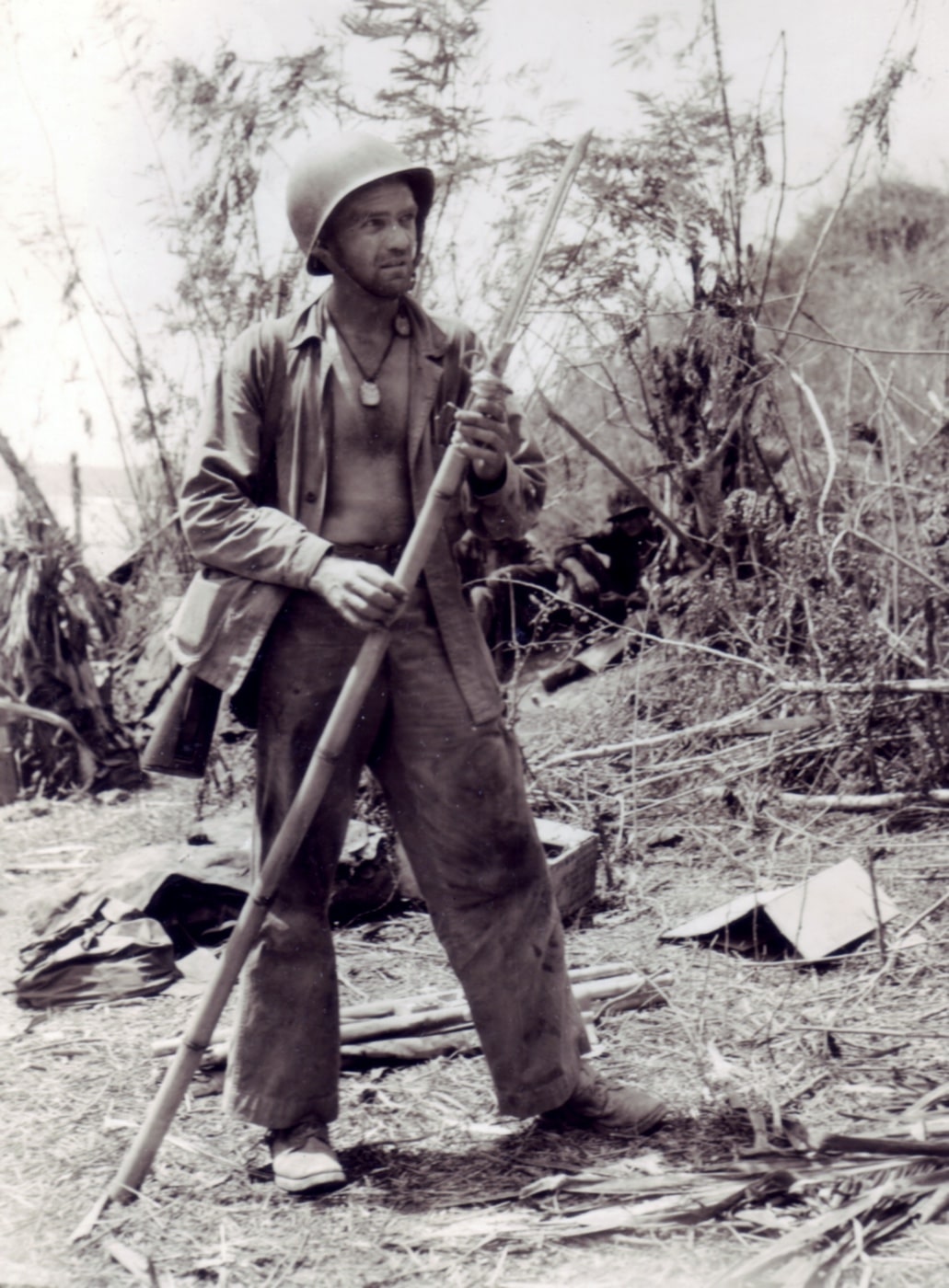
A U.S. Marine examines a Japanese spear made from a bamboo pole and a bayonet. The weapon was recovered during the Battle of Saipan in July 1944. Image: NARA
One Hundred Million Will Die!
By April 1945, the Japanese government was committed to the concept of total war.
Japans government was prepared to sacrifice their entire population to resist an invasion.
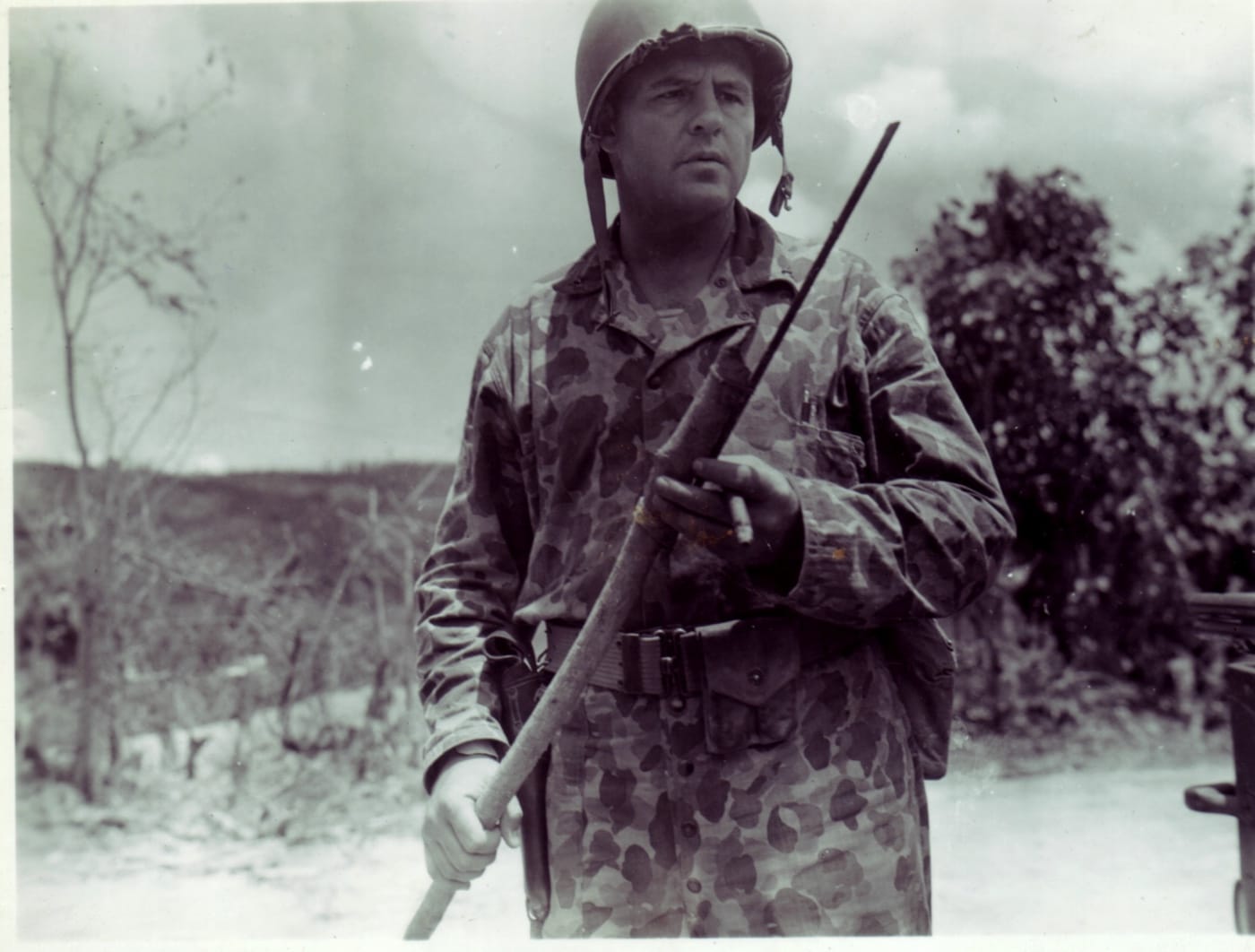
A “Banzai Stick” captured on Saipan during the summer of 1944. This is little more than a pole fitted with a metal spike. While crude, it was deadly at close range. Image: NARA
Close cooperation between American armored vehicles and their supporting infantry stopped many of these suicide anti-tank measures.
Description: The fougasse of this lunge mine is located in front of the handle.
The powder charge and the cavity are separated by a metal funnel.
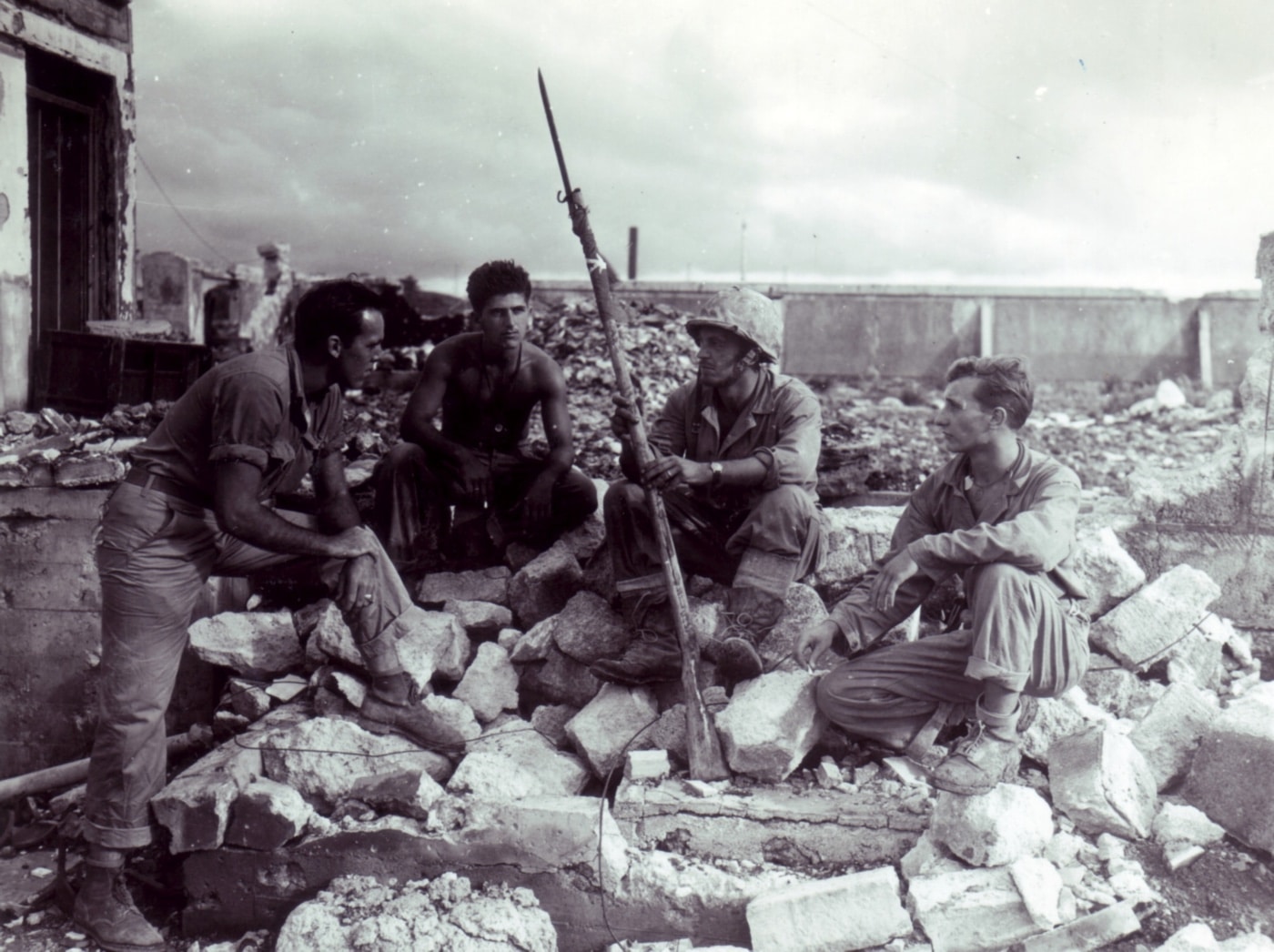
This “Banzai Stick” was captured by U.S. Marines on Okinawa. The crude spear uses what appears to be a rifle stock. Image: NARA
It contains about 3 kg (6.6 lbs.)
The wooden handle is 59 inches long and has a striker at the end.
It has a cylinder which screws on the fougasse.
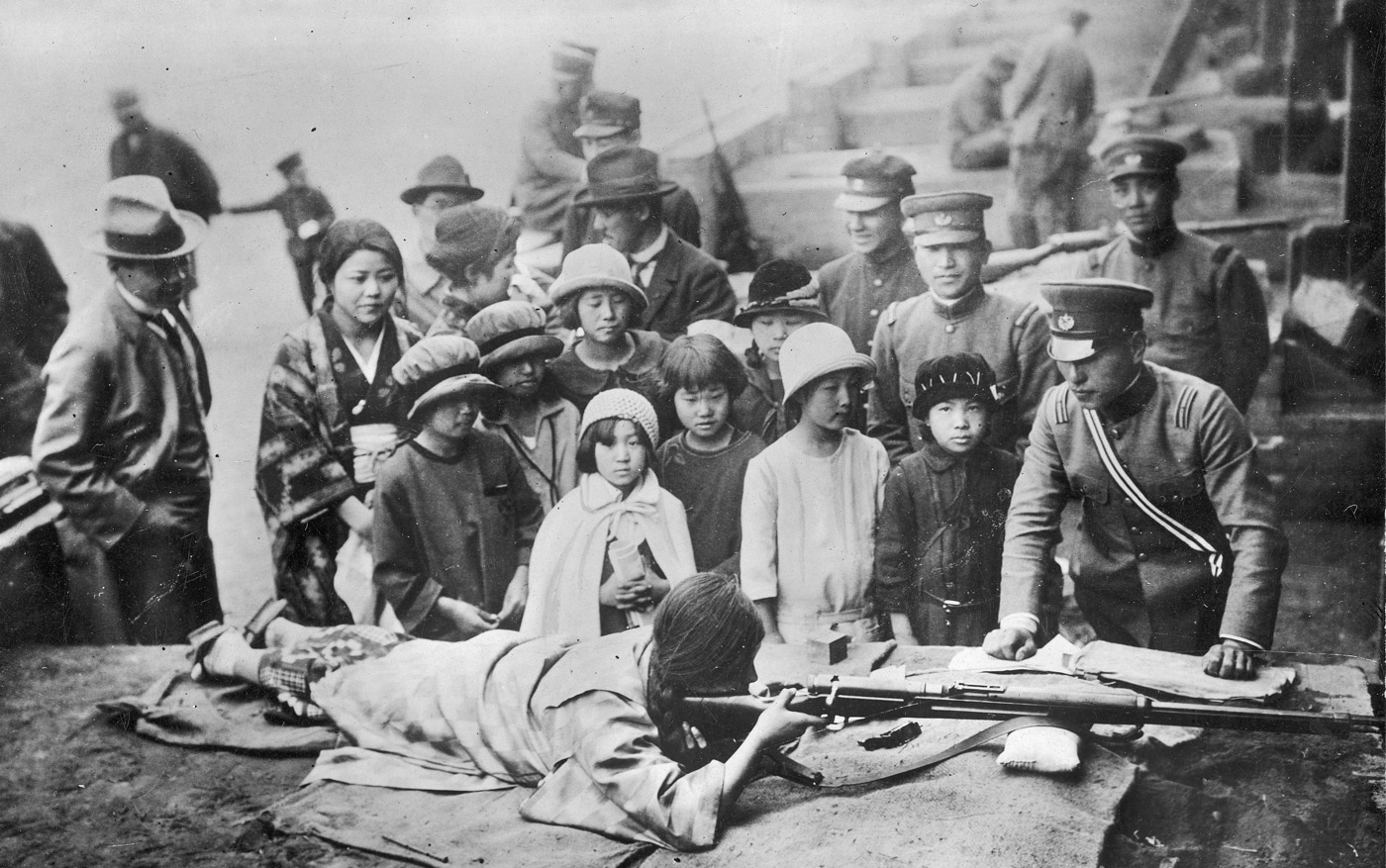
Military training of civilians in Japan included these young Japanese schoolgirls. For many, death was preferred to surrender. Image: Polish National Digital Archives
Attach the handle to the fougasse.
Pull the safety pin out.
The weight of the fougasse is approximately 5 kg (11 lbs).

Japanese women wearing gas masks learn how to operate the Type 11 LMG to defend Japan. The Type 11 was similar to the Hotchkiss machine gun. Image: Polish National Digital Archives
The weight of the handle mechanism is approximately 1.5 kg.
The total is approximately 6.5 kg.
Do this by holding the center of the handle as near as possible to its extremity.
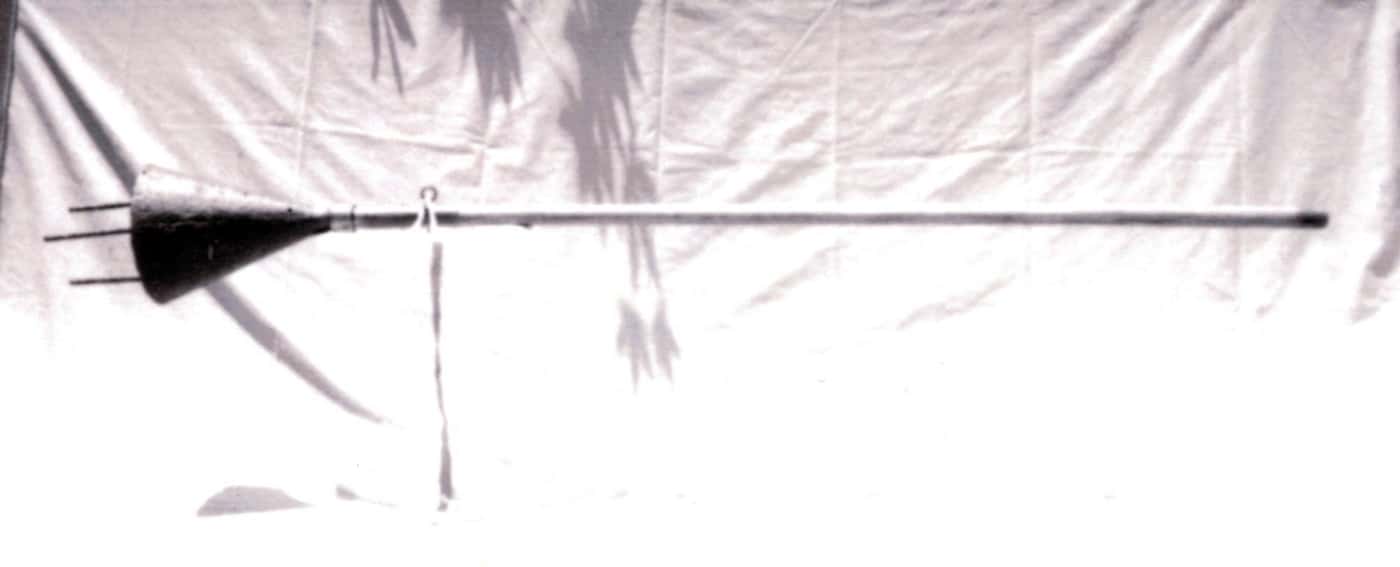
The Japanese Lunge Mine, also known as the Shitotsubakurai. It was a hollow-charge anti-tank mine mounted on a spear. Image: Courtesy of Edwin Libby
When lunging forward, thrust the handle forward with sufficient force to insure a certain explosion.
However, make contact squarely.
Considerable skill is necessary in the lunging operation due to the weight of the mine.
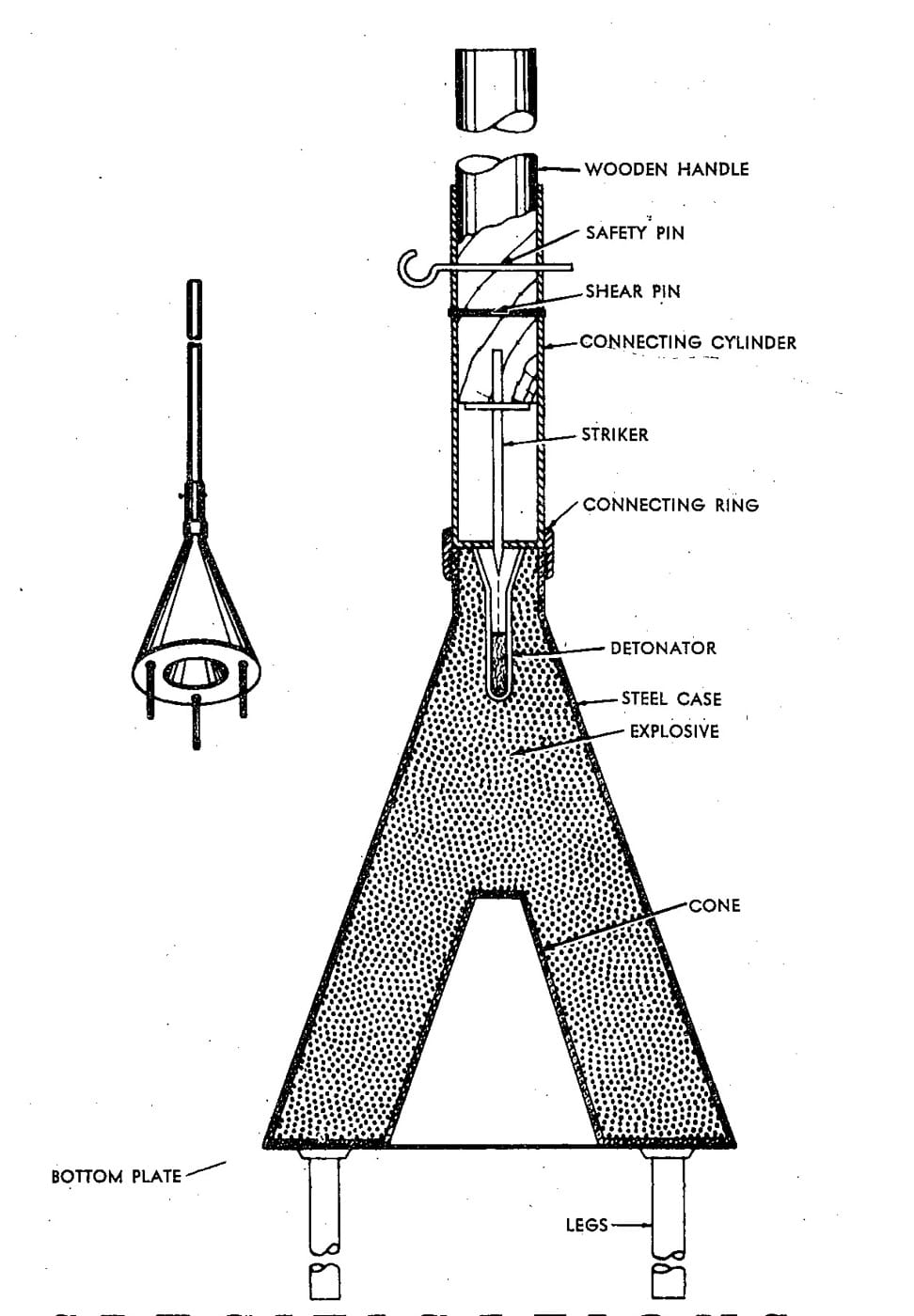
This is a diagram of the Japanese anti-tank mine’s conical warhead. It was designed to be effective against American tanks with no regard as to the survivability of the user. Image: NARA
The best method is to make a suicide attack, therefore without losing footing, make contact squarely.
The resulting blast would likely destroy the vehicle and incinerate the lunge mine operator.
punch in M-4 medium tank with armor plating of 40-45mm in thickness.
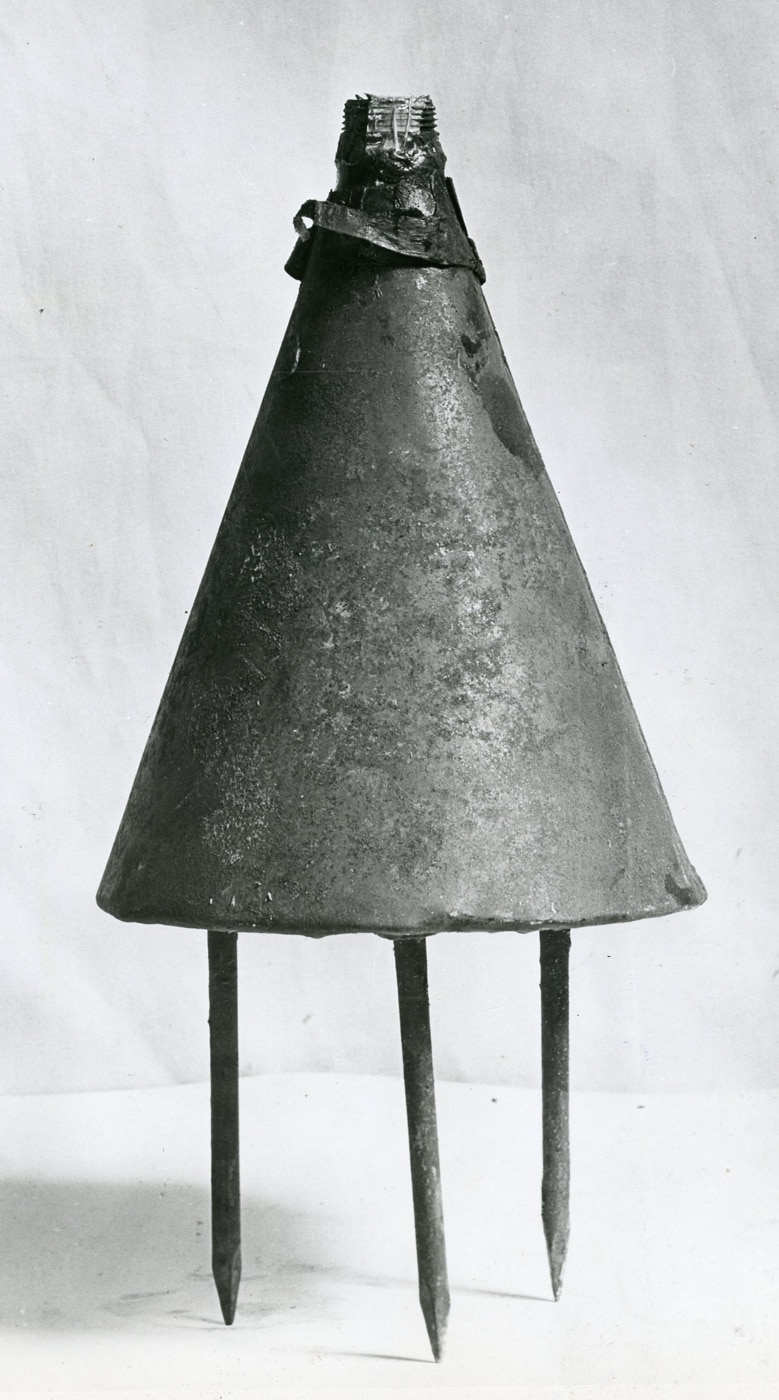
The hollow charge warhead contained 6.6 pounds of TNT which was theoretically capable of penetrating up to 150mm of armor plate at 90 degrees. Image: NARA
Final Thoughts on the Lunge Mines
Suicidal anti-tank efforts were not unique to the Imperial Japanese Army.
In the end, the lunge mine proved to be unsuccessful, regardless of Japanese zeal.
Its design required close-quarters ambush, but the five-foot length of the weapon made it awkward in this role.
Once alerted to its existence, U.S. Army and U.S.M.C.




